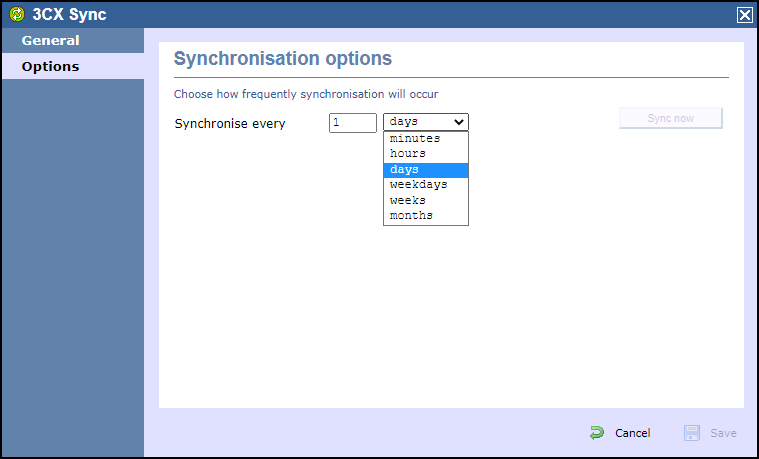...
This gets around the restrictions imposed when using the native CDR output through the regular Active or Listening connection on 3CX.
When using CXD, there is no need to configure the SMDR (Station Message Detail Recording) output on the 3CX phone system as CXD operates independently and uses the live event data, simplifying the setup process.
Pre-installation requirements
You need to have the information below and at least 124.1 MB of disk space in order to complete the installation of CXD:
...
NOTE: CXD does not alter the configuration of the phone system itself; it only uses the information to establish the connection to collect live events.
Getting CXD
Please submit a support ticket through our online Gateway or send an email to [email protected] to request a copy of the 3CX CXD Server. To guarantee that the 3CX live events are appropriately captured and linked with TIM Enterprise, the support team will need to help with the CXD server installation.
...
NOTE: 3CX CXD server is a 64-Bit application.
Installing CXD
- Once you have obtained your copy of CXD, you're ready to install.
- Click on the Executable and UAC will pop up. Please click yes to accept this.
- The Wizard will now ask you where to install the CXD Server, please change this as per your requirements.

- On the “Select Components” section please leave everything as default and click 'Next'.
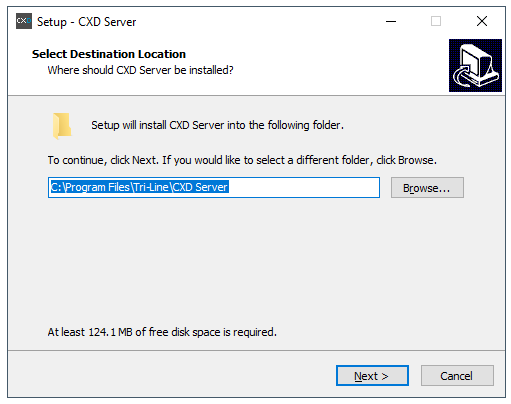
- On the “ready to install” section please click on 'Install'. The Wizard will now attempt to install it.
- Once the installation is complete, the CXD configuration screen will pop up.
- There are three options that need to be configured. Enter the details as shown below:
3CX Host/IP = Please enter the IP address of the 3CX PBX
Username = username used to connect to the 3CX
Password = password user to connect to the 3CX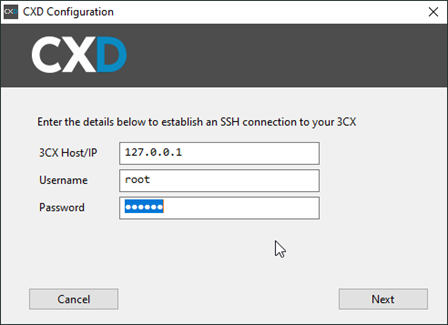
- Once this has been configured, please click 'Next'. If successful, CXD will attempt to establish a connection to the 3CX. Please note that an account that has SSH permission will be needed in order to connect successfully.
- You will be presented with the option to set web ports and an API Secret key that the CXD service will require when connecting with TIM Plus. Please make a note of this information as it will be needed later.

- Click 'Next' the Wizard will confirm that the configuration is complete, and the CXD service will be started.

...
Configuring TIM Enterprise
- To add a siteIf the 3CX is serving multiple sites, skip to step 5. If you are adding a new site with a 3CX, click on the 'Directory' tab.

- Click on 'New object'.

- Select 'Site', and type the name of the site as follows:
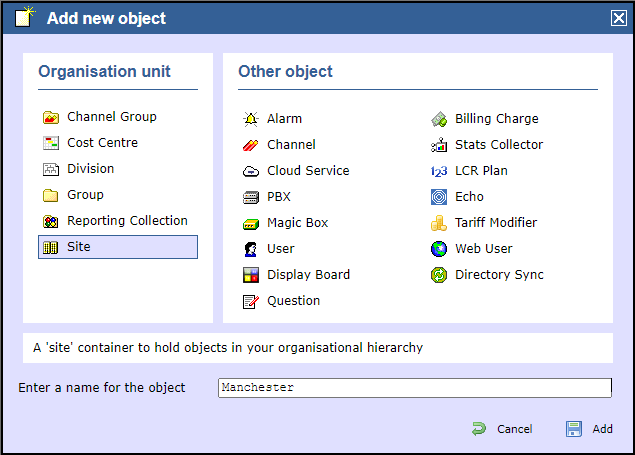
- Go to the Site, and click on 'Open' as shown below:
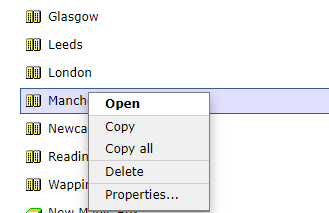
- Select 'PBX' from the 'Other objects' list and type in the name of the 3CX site e.g. Manchester 3CX

- Select '3CX EventsEstablish a TCP connection to PBX' as the connection method.
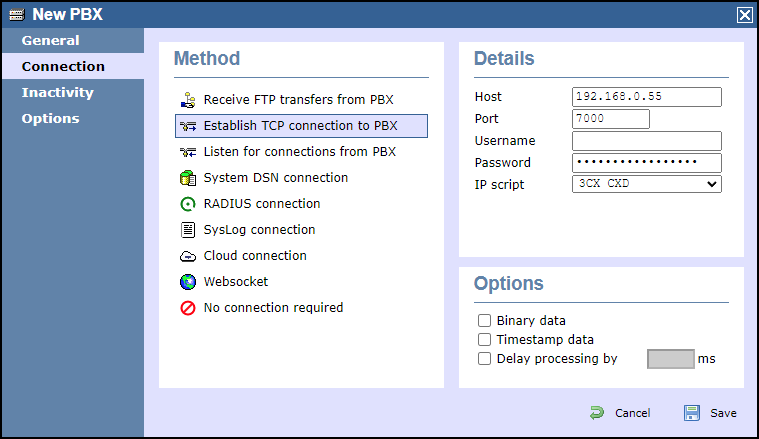
- Then select '3CX CXD' from the PBX IP script drop-down list .

- Select 'CXD' as the connection method.
- Fill in the host, port, and password details as shown below;
...
- and enter the details as shown above.
- Host: The IP address of the machine where the CXD server was installed.
Port: Enter the default Port number.
Username: Leave blank.
Password: This is the ‘API Secret’ created earlier.
IP script: Select '3CX CXD' from the drop-down list. - An additional benefit of using CXD as the connection method is that TIM Enterprise can sync with the 3CX Server.
A sync will allow you to pull a list of users and devices from the system.
This allows you to configure and set up the directory much faster.
To add a 'Directory Sync' object, select and name as shown in the example below: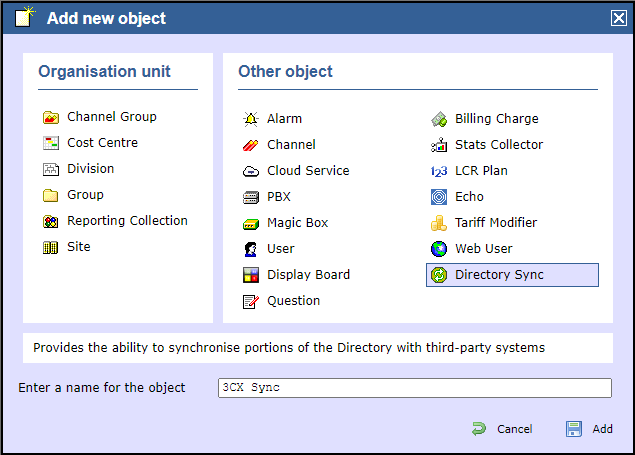
- Once the Sync Object has been added to your Directory, you have the option to 'Sync now' or return at any
time and select 'Properties' to sync again later.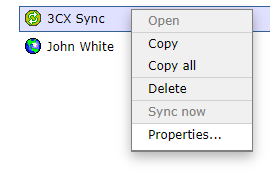
- After selecting 'Properties', simply choose how often you would like to synchronise as shown below:
